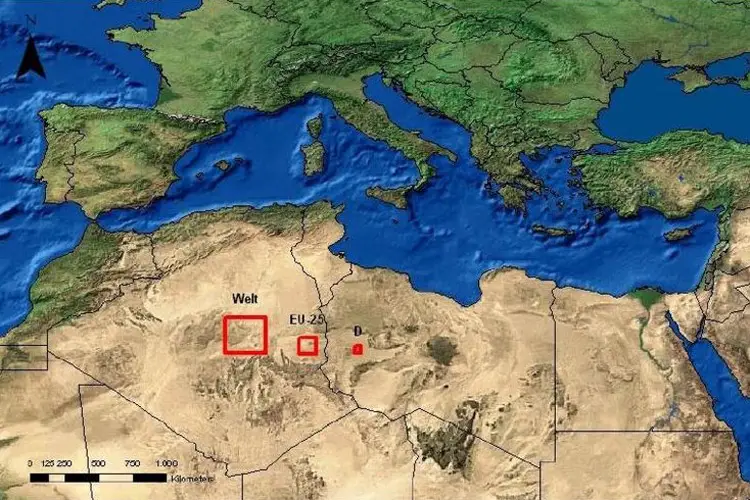Uncategorized
This Area Would Be Enough to Power the Whole World with Solar Energy

Did you know how much electricity the world consumes every year? According to the statistical data from the Index Mundi website, the global electricity consumption reached 17,780 billion kWh in 2011 and 19,090 billion kWh in 2012. With the constantly growing population and the expansion of technological infrastructure, this number increases each year while the energy resources of our planet are limited and will be exhausted in the near future.
At the same time, the Earth receives the average of 164 Watts of solar energy per square meter within a 24 hour day, making it 84 Terawatts of power (or 84 billion kWh) per day worldwide. So, the challenge is to collect the necessary amount of solar energy by the means of solar panels. You may think that vast territories would need to be covered with solar panels to supply the entire world with electricity. However, as incredible as it may sound, a tiny piece of land would be quite enough to cover the global demand for electricity.
According to a diploma thesis by Nadine May of the Technical University of Braunschweig titled “Eco-balance of a Solar Electricity Transmission from North Africa to Europe,” the world could be entirely powered by solar energy by placing solar panels in a small area in North Africa.
The three red boxes you can see in the image above show the area that would be enough to cover the demand for solar electricity in Germany (D), Europe (EU-25), and the whole world (Welt).
Of course, this would require installation of the necessary equipment and cable networks and would have some ecological impacts on the ecosystem of the area, which, however, would be many times lower than those from a conventional energy plant. In any case, the benefits would be much greater than any possible environmental effects.
“The general statement can be formulated that, from an ecological point of view, nothing is opposed to the expansion of solar thermal energy in North Africa and a transmission of the generated solar electricity to Europe,” May concludes.
It is worth noting that the paper was published back in 2005. Now, ten years later, most countries still depend on the conventional sources of power generation and take little advantage of the renewable energy. The problem is that much depends on the governments, which, in their majority, don’t seem to favor the development of green technology and renewable energy.
This, however, shouldn’t stop us from having our own ‘green revolution’ – everyone can install solar panels on their roof instead of continuing the use of conventional technologies based on fuel. Remember that the future of our planet depends on our choices and behaviors.
Typos, corrections and/or news tips? Email us at Contact@TheMindUnleashed.com
